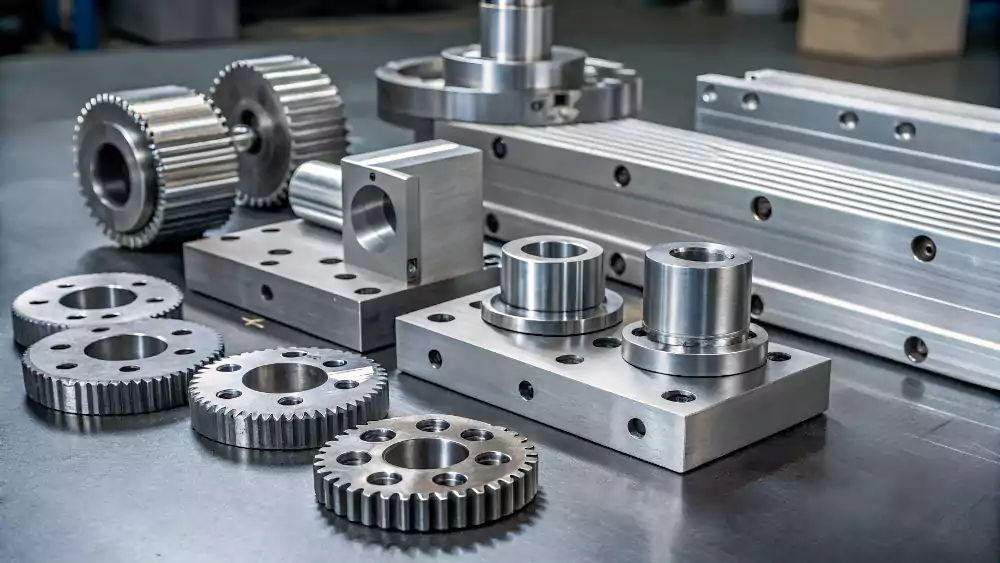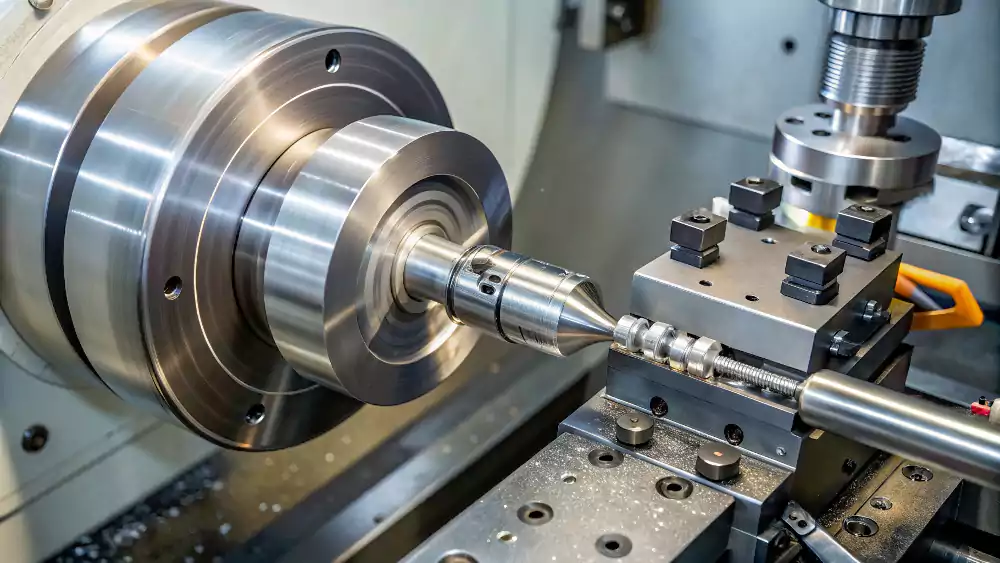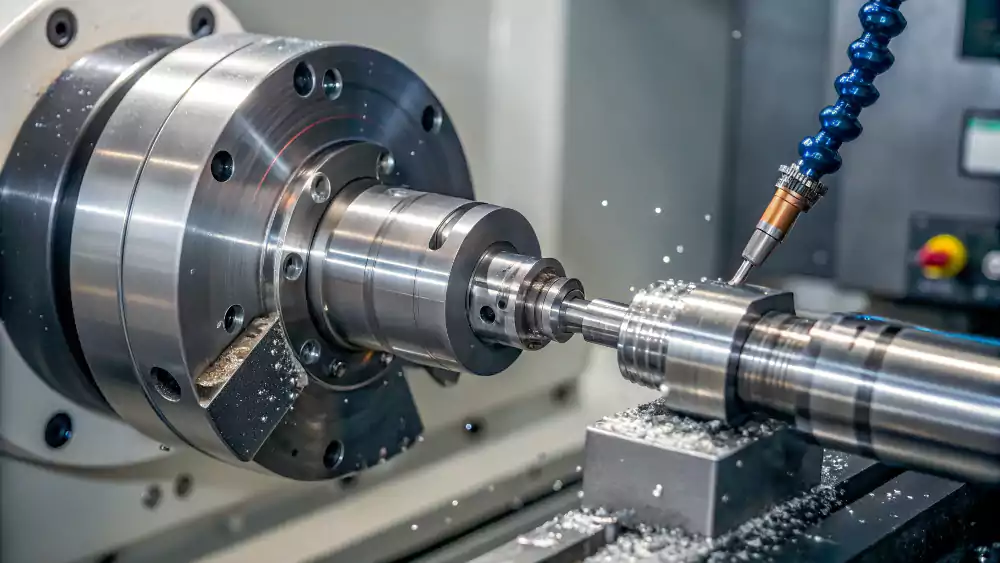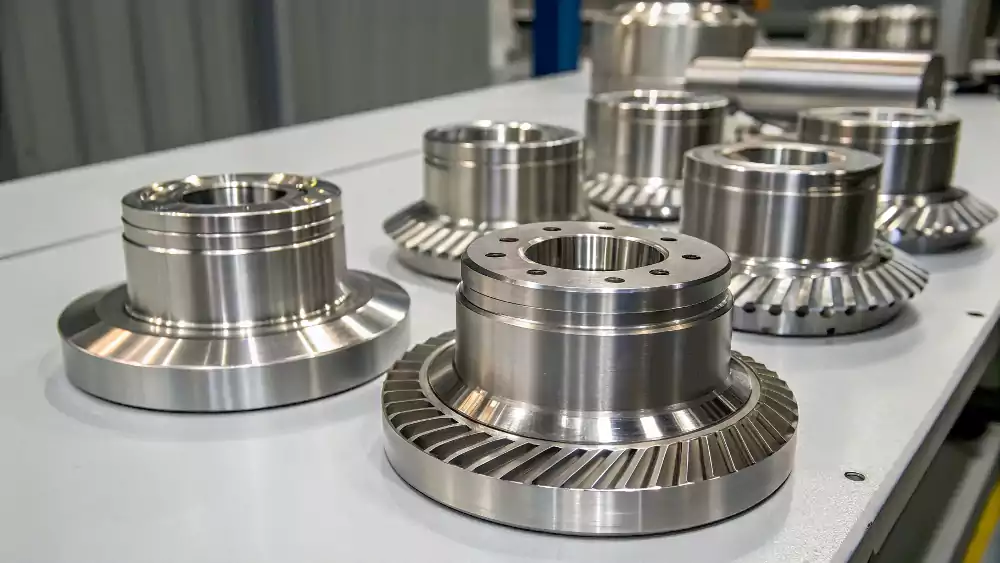Selecting the wrong material ruins precision parts. High-stress applications demand reliability. Steel solves this with unmatched durability.
Steel offers superior strength, wear resistance, and cost efficiency for CNC machining. Its versatility handles aerospace brackets, automotive gears, and industrial rollers. Consistent results come from predictable machining behavior and thermal stability.

Every project has unique steel needs. Material choice impacts performance and cost. Let me guide you through critical considerations.
Why is steel ideal for both prototyping and production?
Steel’s flexibility makes it suitable for everything from one-off prototypes to high-volume runs.
Steel is easy to machine, widely available, and has consistent material properties, making it ideal for prototyping and production-scale parts alike.

Steel provides strength and reliability
When I choose a material, I need to know it can handle real-world use. Steel offers high tensile strength1 and dimensional stability. It’s great for mechanical components like shafts, brackets, housings, and structural parts. Plus, it holds up under wear and impact. That’s critical when a part needs to last.
It machines well and finishes clean
With the right toolpath and cutting parameters, steel machines cleanly. I get tight tolerances, sharp threads, and smooth surfaces. This is especially useful when working with complex geometries. And since I often need a range of surface finishes, steel gives me plenty of options—from as-machined to black oxide or zinc plating.
Steel is affordable and scalable
Steel’s price point makes it practical. It’s cheaper than exotic metals like titanium, and easier to source than high-grade alloys. Whether I’m machining one part or thousands, steel helps keep costs under control. This is key when quoting jobs and hitting client deadlines.
| Feature | Benefit |
|---|---|
| High strength | Supports structural loads |
| Good machinability | Shortens cycle time |
| Available finishes | Adds corrosion protection |
| Affordable | Lowers material costs |
| Recyclable | Reduces environmental impact |
What are the common steel types used in CNC machining?
There are several types of steel used in CNC machining, each with its strengths.
The most common steels in CNC machining include carbon steel, alloy steel, and stainless steel. Each offers different combinations of hardness, corrosion resistance, and cost.

Carbon steel: strong and simple
Carbon steel is often my first choice for general-purpose parts. Grades like 1018 or 1045 are easy to machine and very cost-effective. They’re ideal when I need strong parts without needing to worry about corrosion resistance.
- 1018 Steel: Low-carbon, excellent machinability, great for structural parts and shafts.
- 1045 Steel: Medium-carbon, higher strength, often used for gears and pins.
Alloy steel: stronger and tougher
Alloy steels like 4140 or 4340 are a step up in performance. They include extra elements like chromium or molybdenum, which improve wear resistance and strength. I use these when I need impact-resistant or fatigue-resistant parts.
- 4140 Steel2: Great for axles, bolts, and collars.
- 4340 Steel: Extremely tough—often used in aerospace and defense parts.
Stainless steel: corrosion-resistant and clean
Stainless steel is my go-to when parts are exposed to moisture, chemicals, or outdoor environments. Grades like 303, 304, and 316 have great corrosion resistance.
- 303 Stainless: Easy to machine, best for high-precision fittings.
- 304 Stainless: More corrosion-resistant, commonly used in kitchen and medical parts.
- 316 Stainless: Superior corrosion resistance, especially for marine or chemical exposure.
| Steel Type | Key Features | Common Use Cases |
|---|---|---|
| 1018 Carbon | Low cost, easy machining | Brackets, fixtures |
| 1045 Carbon | Higher strength than 1018 | Shafts, gears |
| 4140 Alloy | High tensile strength, wear resistance | Tooling, automotive parts |
| 4340 Alloy | Extremely tough | Aerospace, defense |
| 303 Stainless | Best machinability among stainless steels | Fittings, fasteners |
| 304 Stainless | Good corrosion resistance | Kitchen, medical parts |
| 316 Stainless | Excellent corrosion and chemical resistance | Marine, industrial components |
How Does Steel Machining Impact Production Timelines?
Unexpected delays anger clients. Complex geometries create bottlenecks. Optimized steel machining prevents schedule disasters.
Proper toolpath planning reduces cycle times by 25%. Pre-hardened steels eliminate heat treatment delays. Automated inspection ensures first-pass success for urgent orders.

Speed Optimization Techniques
Three strategies accelerate steel production:
- Toolpath efficiency3: Minimize non-cutting movements
- Multi-axis machining: Complete complex features in single setups
- High-pressure coolant4: Extend tool life during heavy cuts
During a recent automotive project, we reduced 4140 steel housing machining from 8 hours to 5.5 hours through trochoidal milling. This technique maintains constant tool engagement.
Tolerance Management Challenges
Thermal expansion causes dimensional drift in long-running jobs. Our solution involves:
- Climate-controlled machining bays
- In-process laser measurement
- Compensatory tool offset algorithms
For parts requiring ±0.01mm tolerances, we machine steel components in temperature-stable night shifts. This prevented rejection of 500 sensor mounts last quarter.
What Surface Finishes Can Steel Achieve?
Poor finishes ruin functional parts. Rough surfaces accelerate wear. Correct finishing techniques solve these problems.
Steel accepts diverse finishes: bead blasting hides tool marks, electropolishing enhances corrosion resistance, and nickel plating improves wear characteristics. Finish selection depends on application requirements.

Functional vs. Aesthetic Finishing
Industrial components need durable treatments. Our robotics clients specify:
- Hard chrome plating for hydraulic rods
- Black oxide coating for corrosion resistance
- Grinding for bearing surfaces
Decorative pieces use different approaches. A luxury watch client requested mirror polishing on 316L steel cases. We achieved this through progressive abrasive polishing from 220 to 2000 grit.
Cost-Effective Finishing Guide
| Finish Type | Cost Factor | Durability | Best For |
|---|---|---|---|
| Powder coating | Low | Medium | Consumer product housings |
| Passivation | Medium | High | Medical instruments |
| TiN coating | High | Very High | Cutting tool edges |
For budget-sensitive prototypes, we recommend tumbled finishes. This $0.25/part solution provides uniform matte surfaces quickly.
Conclusion
Choosing the right steel ensures your CNC machined parts meet strength, cost, and performance goals—making smart material selection the key to success.
- Understanding high tensile strength can help you choose the right materials for durability and performance. ↩
- Find out how 4140 Steel is utilized in high-stress applications, providing strength and reliability. ↩
- Exploring this resource will provide insights into optimizing machining processes, enhancing productivity and reducing costs. ↩
- This link will explain the benefits of high-pressure coolant, crucial for extending tool life and improving machining efficiency. ↩


Pingback: What Are Custom Metal Parts and How to Get High-Quality Ones Fast? - CNC Machining Supplier From China